Find your aloha in Hawai'i. These are the best things to see on do on each major Hawaiian island.
How to trek the Inca Trail and see Machu Picchu
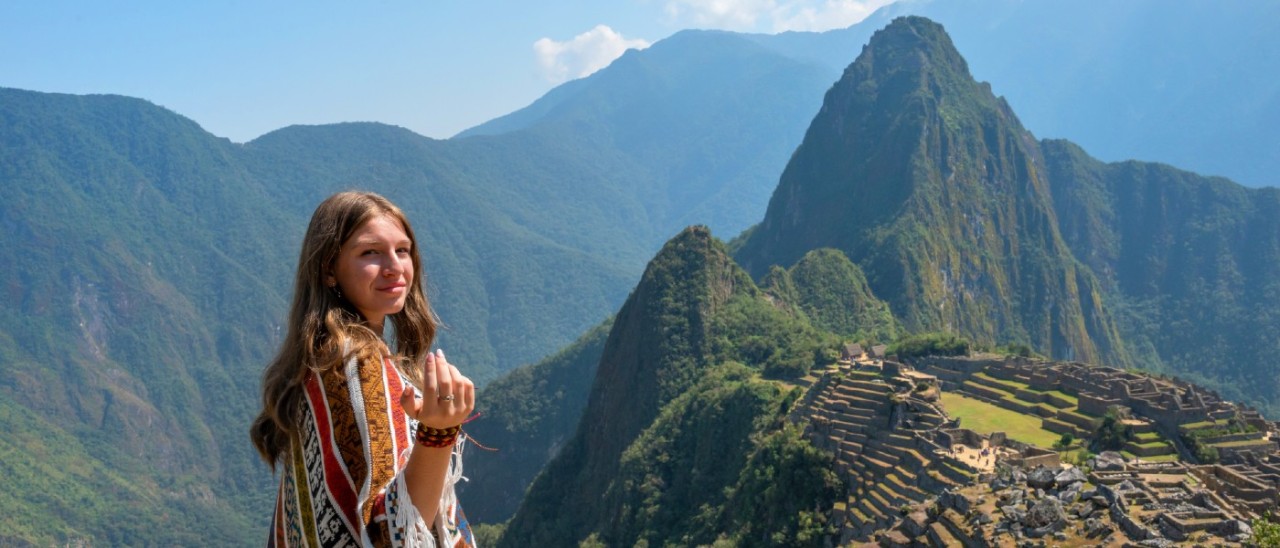
The Inca Trail is a legendary trek through the Peruvian Andes. For many, it's the journey of a lifetime: equal parts physical challenge, cultural immersion and spiritual awakening.
The Inca Trail isn't your ordinary holiday stroll. It leads travellers along ancient stone paths, winding past cloud forests, alpine passes and ancient ruins before culminating at the Sun Gate with a breathtaking view of Machu Picchu.
"Machu Picchu isn’t just another place to visit - it's one of the world's most extraordinary archaeological sites, tucked high in the Andes and recognised by UNESCO as a World Heritage site," says Intrepid Travel ANZ General Manager Yvette Thompson.
"You can reach it by train, but walking the Inca Trail makes it truly bucket-list worthy. Over four days, you trek through misty mountain passes, past centuries-old ruins and through breathtaking valleys...It's the kind of travel experience that stays with you long after you've come home."
Here's how to safely and respectfully trek the Inca Trail, so you can make the most of one of the world's great walking experiences. Make sure you know how to protect your passport and consider anti-theft bags to keep all your valuables safe while travelling.
RACV Travel & Experiences is your one-stop shop for travel. RACV Members save on Inca Trail and Machu Picchu tours.
What is the Inca Trail?
The Inca Trail is a 42km trek through the Sacred Valley of the Incas in southern Peru. It usually takes four days and three nights to complete, starting near the Urubamba River and ending at Machu Picchu.
Along the way, trekkers pass through a series of ancient Incan sites, from agricultural terraces to ceremonial outposts perched high in the Andes. Walking the same stone paths used by messengers and pilgrims centuries ago gives a sense of stepping back in time.
The highlight for most is arriving at Inti Punku, the Sun Gate, on the final day. From this vantage point, Machu Picchu emerges from the mist. It's a reward that feels all the more profound after days of effort, altitude and anticipation.
The Inca Trail itinerary is as follows:
- Day One - a gentle introduction, with rolling terrain and the first campsite reached in the afternoon.
- Day Two - the hardest day, involving a steep ascent to Dead Woman's Pass: tough but rewarding.
- Day Three - the longest day, with cloud forest sections and visits to the Phuyupatamarca and Wiñay Wayna ruins.
- Day Four - an early start leads to the Sun Gate in the morning, followed by entry into Machu Picchu.
Why you should hike the Inca Trail instead of taking the train
Machu Picchu can be reached by train, but trekking the Inca Trail offers a deeper experience.
Unlike a day trip, trekking the trail offers gradual immersion into the Andean landscape and culture. The ruins en route are quieter and less crowded than Machu Picchu itself, making them feel like hidden discoveries.
There's also a special camaraderie between fellow hikers, often forming long-lasting friendships forged by shared challenge. Evenings are spent gathered under star-filled skies, with the distant peaks of the Andes standing guard.
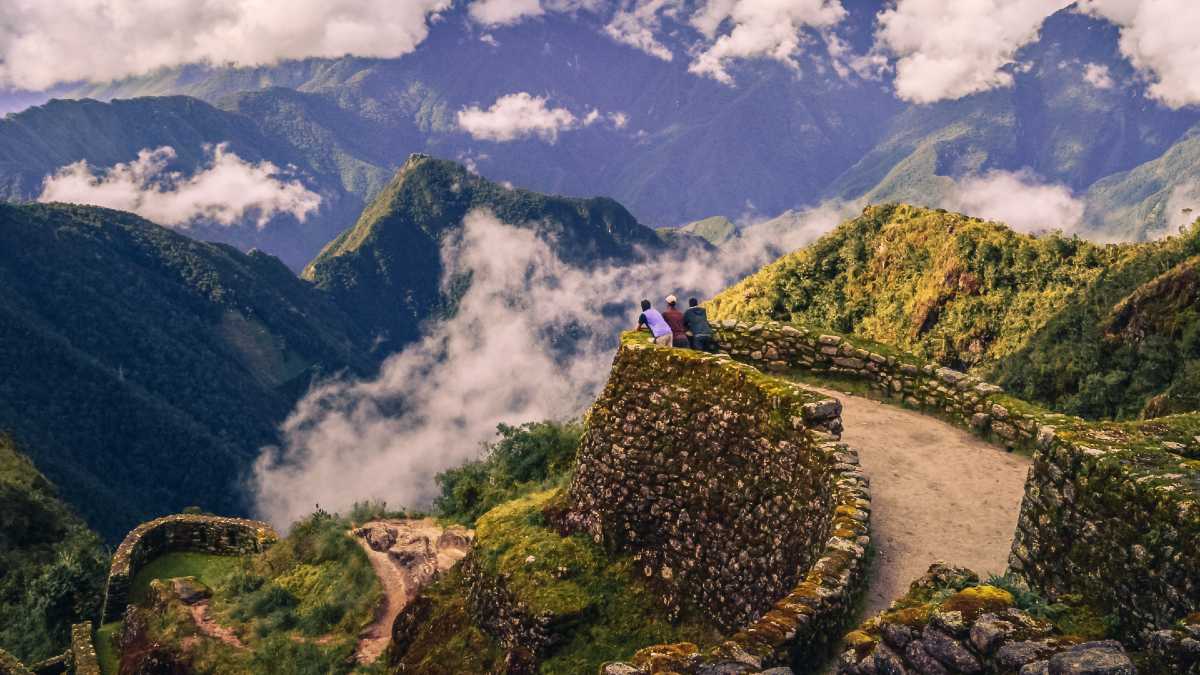
Phuyupatamarca is one of the ruins you'll visit on the Inca Trail. Image: Getty
When is the best time to hike the Inca Trail?
The Inca Trail is open 11 months of the year, closing only in February for maintenance.
- Dry season (May to September) - the most popular time to trek. Days are usually clear, with crisp mountain air and blue skies, but nights can be very cold at higher altitudes.
- Shoulder seasons (April, October, November) - still relatively dry, with fewer crowds. Landscapes are often lush and temperatures milder.
- Wet season (December to March, excluding February) - trails can be slippery, rivers swollen and visibility reduced. While it is possible to trek at this time, it requires greater resilience and a willingness to face rain.
Permits for June, July and August sell out months in advance, so booking early is essential if you're targeting peak season.
How to get a permit for the Inca Trail
A strict permit system regulates access to the Inca Trail. Only 500 permits are issued per day, including those for guides, porters and cooks. That leaves about 200 for actual trekkers.
Permits cannot be bought directly by individuals. Instead, they must be secured through licensed tour operators, who handle logistics such as transport, camping equipment and meals.
For peak season, permits sell out up to six months in advance, so planning early is critical. Tickets usually go on sale in early October for the next year's season.
The best tour operators for the Inca Trail
With dozens of companies offering Inca Trail treks, your selection comes down to a mix of reputation, safety, ethical practices and inclusions. While budget options exist, it's worth investing in your tour operator. A quality operator can make the difference between a tough slog and an inspiring journey.
"The Inca Trail can only be done with a licensed operator, which means you'll have the logistics sorted from permits and tickets to meals and transport," Thompson says.
"With Intrepid, you're also walking alongside local leaders. You won't be in a huge crowd either - our small groups mean more connection, both with your fellow trekkers and with the place itself. And because we're a B Corp, your journey also supports local jobs, ensures porters are treated fairly, and helps protect the Inca Trail for the future."
In light of recent concerns about the treatment of porters (locals who transport the bulk of hikers' gear on multi-day journeys) on famous treks like the Inca Trail, Intrepid has put measures in place to ensure responsible, fair treatment.
"Our porters are the backbone of every trek, and we make sure they're treated with care and respect. That means fair pay, proper gear and insurance, and never carrying more than 20kg, less than the legal limit in Peru. They're part of the team, sharing meals and the journey alongside travellers. For us, it's simple: responsible travel should benefit everyone, not just those visiting."
RACV Members save on Inca Trail and Machu Picchu tours with trusted tour operators like Intrepid.
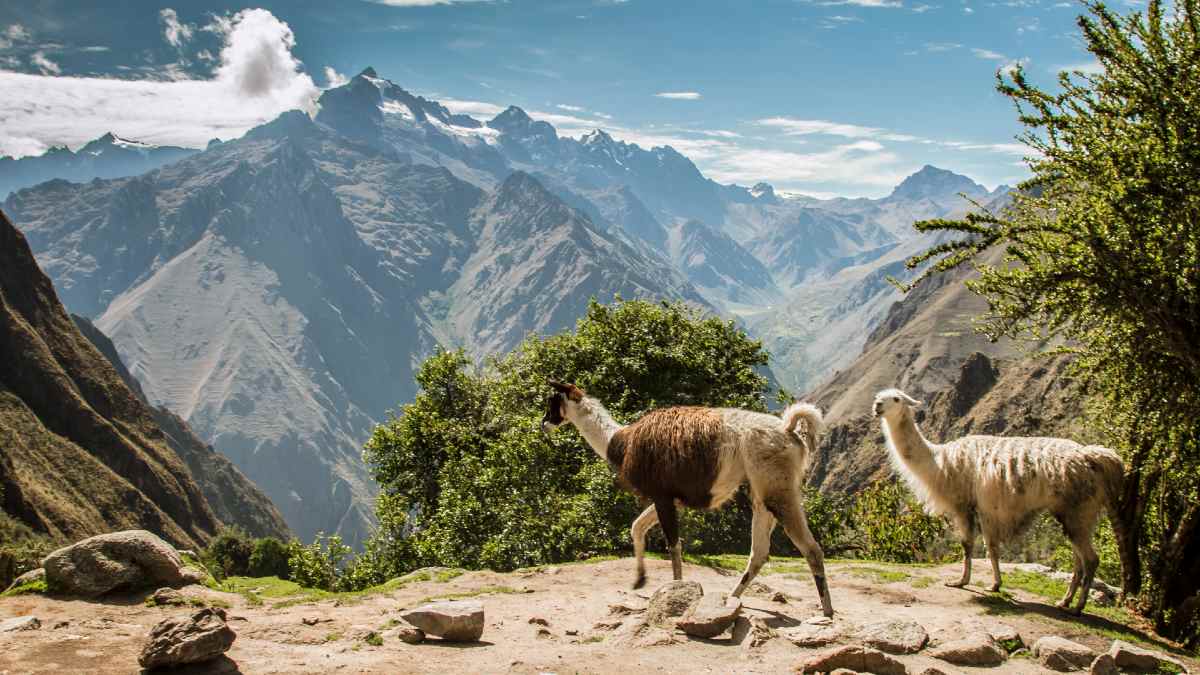
You may see llamas and alpacas on the Inca Trail. Image: Getty
How difficult is the Inca Trail?
The Inca Trail is considered a moderate to challenging trek. While not technically difficult, it requires stamina, determination and altitude adjustment.
The trek involves four days of walking between five and nine hours each day, with steep ascents and descents on uneven stone steps. The highest point, Dead Woman's Pass, reaches 4,215 metres above sea level. At this altitude, even fit hikers can feel short of breath.
"It's a physical challenge, but it's not about being the fittest person on the trail, it's about slowing down, taking it all in and earning that incredible moment when you step through the Sun Gate and see Machu Picchu appear before you," says Thompson.
Anyone with reasonable fitness can complete the trek, but preparation is essential.
How to prepare for the Inca Trail
Building fitness in the months before your trek will make the journey more enjoyable.
"Before you go, try building some hills or stairs into your walks, and if you can, spend a couple of days in Cusco first to adjust to the altitude. Comfortable, well-worn hiking boots are a must – your feet will thank you later. Once you're on the trail, the best advice is to go at your own pace and enjoy it," Thompson advises.
Focus on:
- Cardio training - hiking, jogging or cycling several times a week builds endurance.
- Stair or hill climbs - simulate the long uphill stretches so you aren't caught off-guard.
- Backpack practice - train with a pack so your body adjusts to carrying the extra weight.
- Altitude preparation - arrive in Cusco two or three days before departure to acclimatise to the high-altitude conditions.
What to pack for the Inca Trail
Tour operators provide tents and meals, but trekkers need to bring their own essentials. Pack as lightly as possible: while porters carry much of the communal equipment, you'll still be responsible for your daypack.
You'll need:
- A daypack - to carry water, snacks, sunscreen, camera and personal items.
- Layered clothing - include thermal base layers, a waterproof jacket, hiking pants and a sun hat.
- Sturdy footwear - well-worn hiking boots with ankle support are a must.
- Sleeping gear - operators often provide sleeping mats, but a quality sleeping bag rated to at least -5°C is often recommended.
- Trekking poles (optional) - helpful for balance and to reduce strain on knees.
- Other essentials - insect repellent, a headlamp, water purification tablets and a small first aid kit will all come in handy.
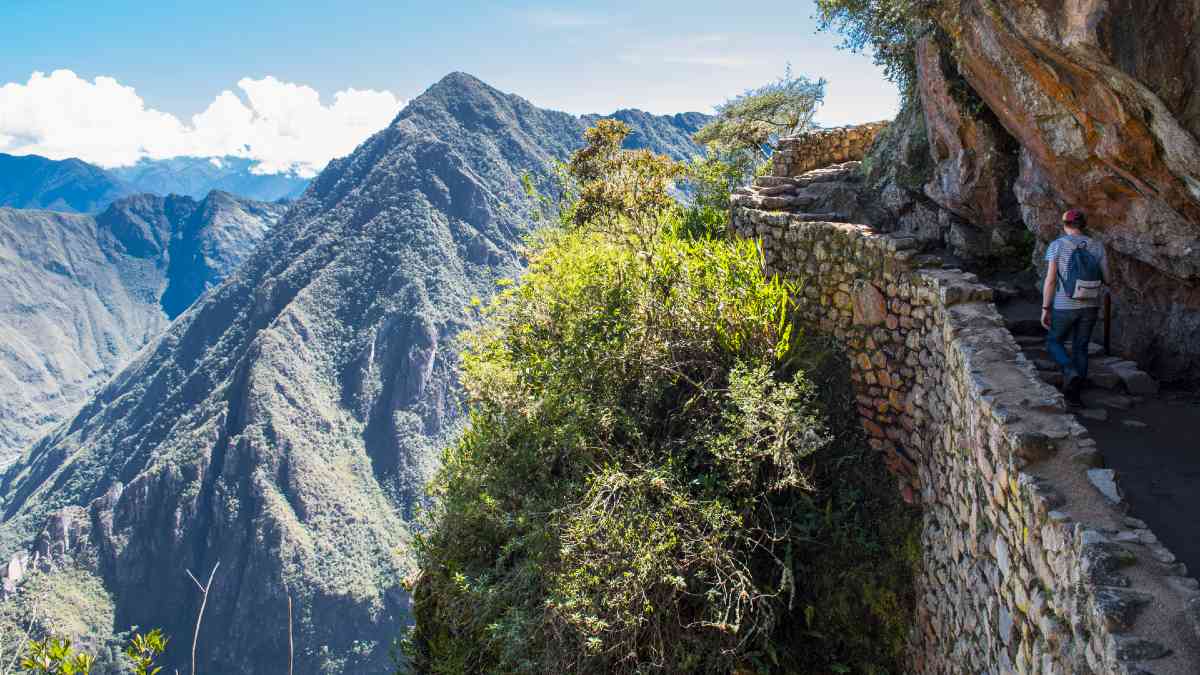
The Inca Trail can be challenging, but it's anyone with reasonable fitness can do it. Image: Getty
Cultural etiquette on the Inca Trail
The Inca Trail is more than a hike: it is a sacred path. Cultural respect is key. Follow your guide's instructions and never litter or damage ruins.
Treat porters with gratitude; without them, the trek would not be possible. Tipping is a common practice in Peru, and you should tip your guides, porters and cooks in Peruvian sol (PEN) at the end of the trek.
Finally, learn a few words of Spanish or Quechua. Simple greetings and thanks go a long way.
Safety on the Inca Trail
Before departure, get your vaccinations up to date and ensure you have a moderate level of fitness. Bring your personal medications and know whether your travel insurance covers trekking at altitude.
Altitude sickness (soroche) is the greatest health concern. Symptoms include headaches, dizziness, nausea and fatigue. Arrive in Cusco early to acclimatise. On the trek, walk at a sustainable pace, drink plenty of water and avoid alcohol. Coca tea is a traditional Andean remedy for altitude sickness - your guides are sure to bring some on the trek.
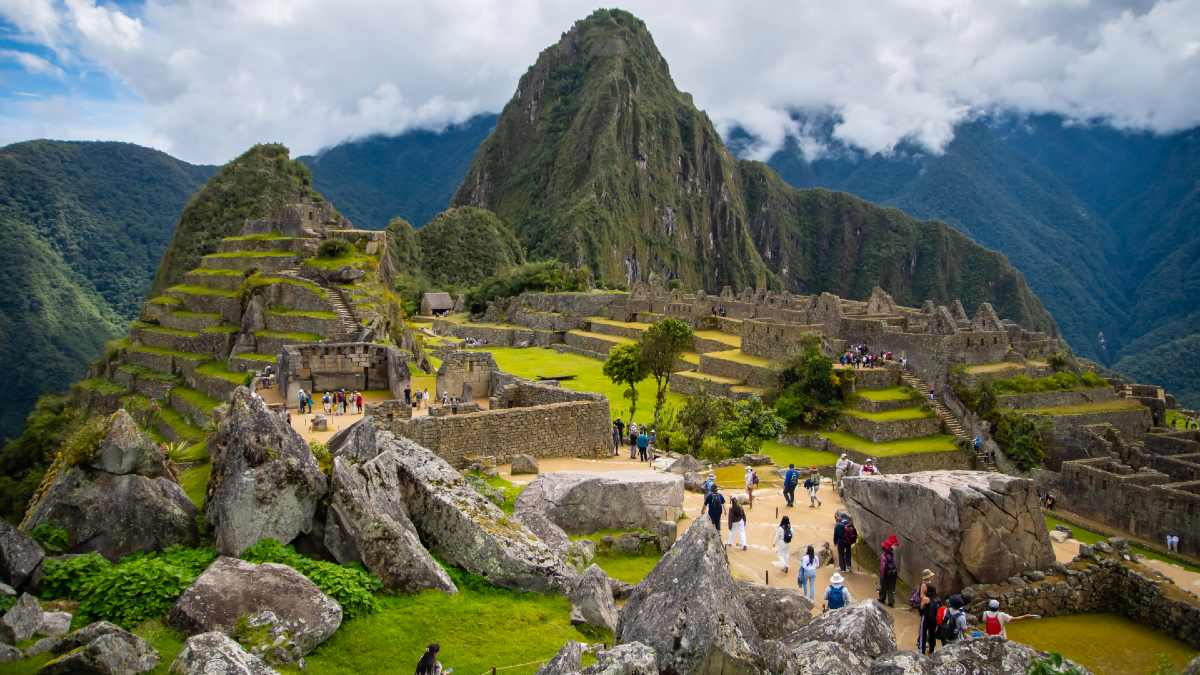
You'll arrive in Machu Picchu on the final day of your Inca Trail hike. Image: Getty
What to expect at Machu Picchu after the Inca Trail
Arriving at Machu Picchu via the Sun Gate is the culmination of your Inca Trail journey.
From here, trekkers descend into the Machu Picchu citadel, exploring temples, terraces and plazas with a guided tour. Highlights include the Temple of the Sun, the Intihuatana stone and the agricultural terraces that cling to the mountainside.
Most trekkers continue to Aguas Calientes, the nearby town, for a hot shower, a hearty meal and perhaps a soak in the thermal springs before returning to Cusco.
Alternatives to the Inca Trail
If you cannot secure a permit to hike the Inca Trail, there are several excellent alternatives:
- Salkantay Trek - a high-altitude route to Machu Picchu through snow-capped peaks.
- Lares Trek - known for cultural encounters with traditional villages.
- Inca Jungle Trek - a combination of biking, rafting and hiking.
- Choquequirao Trek - a longer, remote trek to another spectacular Incan city.
These treks do not require strict permits and are often less crowded.


